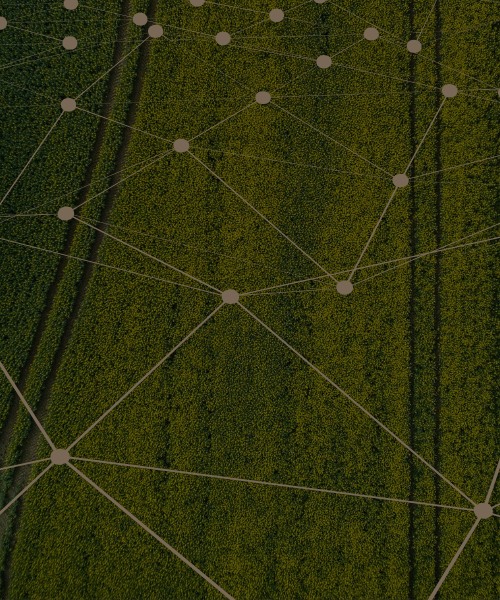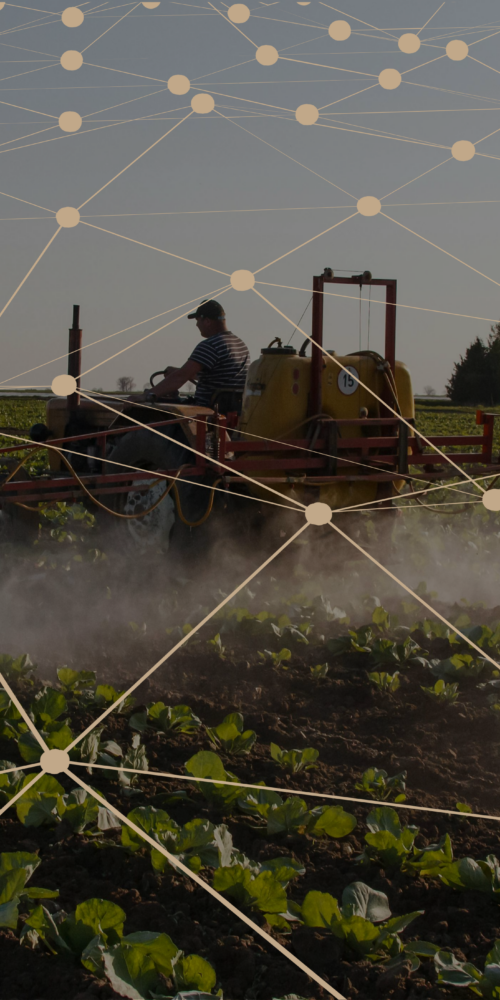Frequently Asked Questions
About climate resilience:
What is the difference between climate adaptation and climate resilience?
Adaptation and resilience have distinct meanings:
- Climate change adaptation: Refers to the process of adjusting to immediate or expected impacts of climate change.
- Climate resilience: The capacity to cope with climate hazards. It reflects the result of adaptation actions, but also includes the ability to anticipate, withstand, recover, and learn to adapt to a changing climate.
How can agriculture best adapt to climate change uncertainties?
When considering climate change, our advice to organisations, whether farm businesses or the companies that depend on them, is not to think too far ahead. Trying to address the challenges posed by long-range climate projections may seem impossibly daunting. Of course, there is always the chance of an exceptional event next year, but the climate experienced over the last 10 years is a reasonable indication of what will happen in the next 5. Therefore, if climate anomalies have recently threatened the profitability of your business, it would be wise to think about taking action.
Farm businesses often have long established traditions, but doing things the way things have been done in the past may not work in the future. Some may be lucky and benefit from climate change, but for many, crop selection and cultivation techniques will need to evolve continuously over a number of decades. However, by taking affordable measures that address today’s climate challenges and planning for the next incremental change, resilience can be built and maintained, step by step.
How to manage climate-related risk in agriculture?
The approach will of course depend on numerous factors, including the crop(s) being grown, the local growing conditions and price paid for the crop. However, there are a range of actions that can help manage climate risks including:
- Selecting more resilient crop varieties, for example those with greater drought or heat resistance.
- Diversification of crops to reduce the financial loss if the main crop were to fail
- Using technology, for example precision agriculture, to maintain or enhance yield under harsher conditions
- Building soil health, for example by reducing tillage or using cover crops, to reduce erosion and maintain soil moisture content
- Improving water management, whether through better drainage, measures that aid water retention, on-farm water storage and/ or use of irrigation systems
- Buying parametric insurance to cover substantial crop losses associated with climate extremes
- Joining or establishing cooperatives to provide support networks and increase negotiating power
- Diversifying business interests to include non-crop or off-farm revenue generating activities.
What are the key regulatory and voluntary reporting requirements to support climate change and resilience in agriculture?
Regulatory requirements for resilience reporting are relatively weak. They include Sustainable Finance Disclosure Regulation (SFDR) in the EU and the International Financial Reporting Standards (IFRS) S1 (which follows on from the now disbanded Task Force on Climate-related Financial Disclosures or TCFD). These requirements are most relevant to large financial organisations.
Some voluntary standards have limited requirements for resilience reporting. For example, the Global Reporting Initiative offers guidance on reporting of key climate impacts in agriculture, aquaculture and fishing sectors.
The main driver for taking action on resilience is the cost of the increasing frequency and magnitude of climate events – in other words, the cost of doing nothing.
Our Climate Resilience Rating Reports can provide you with the insights needed to anticipate and manage costs of climate impacts to your business.
How do you measure climate resilience over time?
Our Climate Resilience Ratings are measured annually to build up a time-series of ratings and associated resilience-related index scores and category breakdowns.
The data will enable organisations to accurately track the changes in their farm portfolio over time, and measure the impact of any adaptation or support measures that are put in place.
About our work:
What are the different stages involved in a Climate Resilience Ratings project?
Our assessments are crop-specific. We carry out different levels of assessment depending on the requirements of our customers:
- Our basic assessments are based on structured, remote data collection that give our customers an indication of the Climate Resilience Ratings for “typical” farms in their particular regions of interest.
- Our most advanced assessments require more contextual research to enable us to configure our rating survey template, and involve data collection from individual farmers.. With these and supplementary data, we are able to provide accurate Climate Resilience Ratings, and present detailed information in categories that are of particular interest to our customers. We also propose adaptation strategies where appropriate.
Contact us to discuss further details and how we can work to meet your needs
What is a Climate Resilience Rating?
A measure of climate resilience. The resilience rating ranges from A (high resilience/ low vulnerability) to E (low resilience/ high vulnerability). The resilience rating is derived from a resilience index score, which is a function of scores for four separate component indices for exposure, sensitivity, adaptability and transformability
How does Resilience Constellation ensure the success of their projects?
Our first step is to build a comprehensive understanding of the challenges that farmers face in cultivating crops or rearing livestock. Our assessment of resilience is tailored according to local conditions, whilst structured to permit comparability with other regions.
The methodology we use for scoring resilience is based on published scientific research. The Climate Resilience Ratings we produce enable benchmarking of farm resilience within and between regions and highlight strengths and weaknesses in different categories (operational, financial, social, physical and infrastructural).
The financial solutions we provide to farmers that want to increase their resilience are based on the innovative use of established and credible financial solutions.
How do our Climate Resilience Ratings benefit the farmers involved?
Where data are collected from farmers, the results of our surveys are shared with the farmers who have contributed so that they can:
- Benchmark their performance against other farmers in the same region or country;
- Gain access to ideas from other farmers in the area and individuals with relevant expertise on how to increase their resilience.
We work with our customers to provide interested farmers with financial solutions that give them the ability to build their own resilience. These solutions include affordable loans (blended finance), beneficial contracts with off-takers (Contracts for Resilience) or parametric/ weather risk insurance. For smallholders, they may be arranged through farming associations or local cooperatives.
Why work with Resilience Constellation?
Our team has a rare combination of extensive agriculture sector knowledge and applied experience in measuring climate risk and designing adaptation solutions. We use this experience to develop new, practical approaches to complex resilience measurement and resilience building challenges. We appreciate the importance of local context and work with our customers to provide clear information that has immediate relevance and benefit to their operations in the agriculture sector.
How can Climate Resilience Ratings help assess demand for finance or insurance products?
As part of our on-farm surveys, we ask farmers about the current availability of loan finance and insurance products, and their level interest in them. Anonymised data is therefore included in the analysis, coupled with an overall score of the financial resilience of farm-businesses.
Terminology
Find definitions to key terms, as we use them, you’ll encounter when exploring our projects, resources, and insights.
View our full glossary for more definitions.
Our Take: We see adaptation as an ongoing effort by farmers, input providers, offtakers and finance providers to modify production systems in response to changing conditions or specific adverse events. Farmers around the world have adapted to changing environmental conditions in the past but climate change is expected to require an acceleration of adaptive efforts, with coordinated efforts and financial support becoming essential.
Our Take: We can consider climate vulnerability to be the product of Exposure and Sensitivity. Exposure takes into account the frequency and severity of adverse climate related incidents, such as droughts, high temperatures or extreme rainfall and whether these are increasing, over time. Sensitivity is the level of damage or losses that are incurred by adverse events. While there are good historical records of weather conditions around the world, the level of damage and loss that occurs on individual farms or production areas is quite variable.
Further resources
 Climate Resilience Glossary and FAQs
Climate Resilience Glossary and FAQs
 Our Approach to Measuring Climate Resilience
Our Approach to Measuring Climate Resilience
